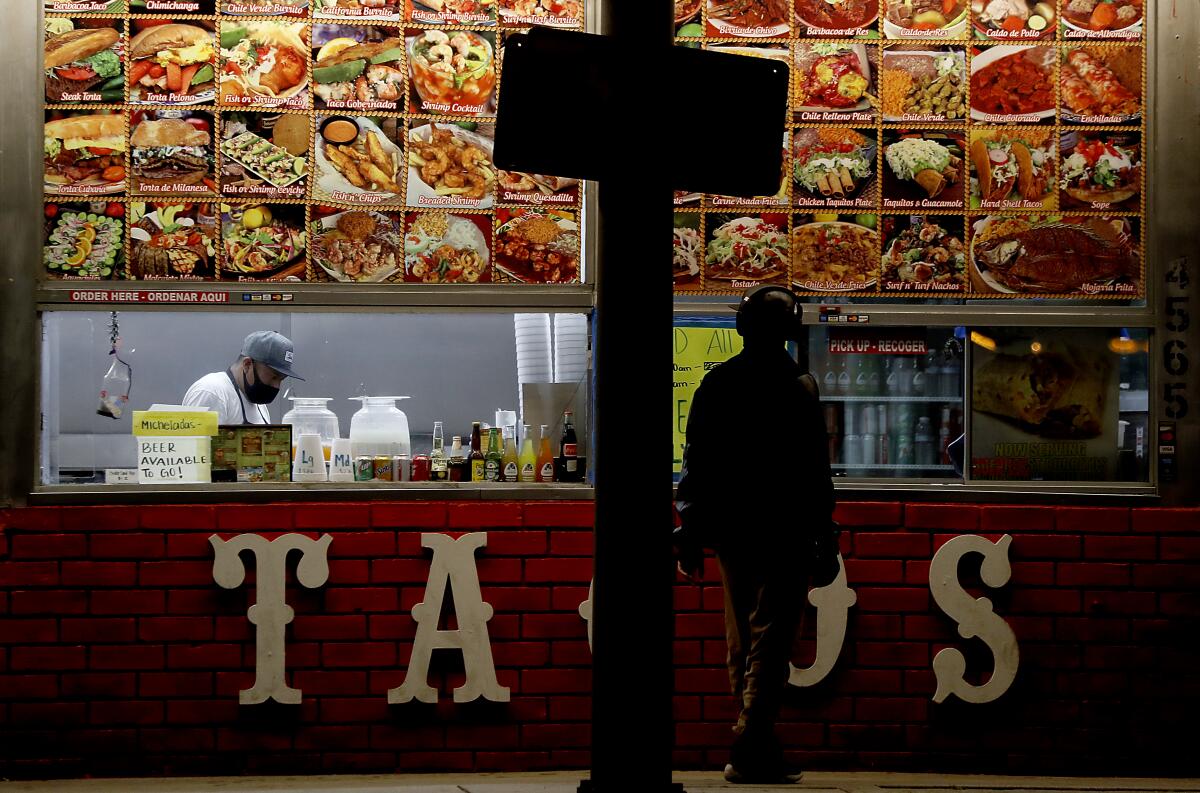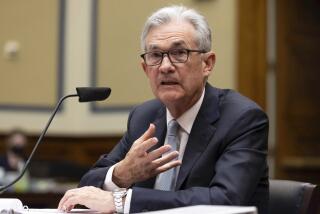Why the service sector is key to economic recovery

- Share via
Wall Street’s most bullish economic forecasts hang on a simple prediction: Everybody will flood back soon to their local gyms, bars and yoga studios as if the pandemic was in the past.
A jobs boom in the vast U.S. service sector — the nation’s largest employer including software developers and restaurants — is a central part of bold calls on growth this year.
The thinking is that vaccines and mounting immunity will unleash pent-up demand, which stirs a hiring wave that drives unemployment sharply lower. The Federal Reserve sees the jobless rate dropping to 5% by the end of 2021 and some in the private sector, including Goldman Sachs Group Inc. and Deutsche Bank, have projections in the 4% range.
The Labor Department provides a fresh look on the service sector with the February employment report Friday. The unemployment rate is expected to tick up to 6.4% from 6.3%, according to a Bloomberg survey.
Weak readings in December and January, which coincided with an escalation of U.S. virus cases, were concentrated in sectors such as leisure, hospitality and retail. The service sector, which employs 122 million people, has almost 9 million fewer workers than when the pandemic struck early last year.
Fed Chairman Jerome H. Powell said in comments to the House Financial Services Committee last week he was worried about permanent disruptions in service sector employment.
“What we’re going to find based on some of the surveys we’ve heard about is that not all of those jobs are going to come back because people have started to implement automation,” Powell said. “Many of those people may find it hard to get back to work, and I think they’re going to need further support.”
Cautious consumer
Labor-saving technology introduced during the pandemic is just one reason why the optimistic forecasts are riddled with uncertainty.
Nobody knows how long cautious consumer behavior will hang around even after widespread vaccination, or how many small businesses have failed or whether companies have just found they can meet demand with fewer employees.
“We can’t tell based on the data right now how fast things are going to come back” in services, said Ernie Tedeschi, policy economist at Evercore ISI in Washington. “There are reasons to be optimistic.”
He points to the potential for a bounce back as vaccine distribution improves, especially in sectors such as hospitality and retail. But he also worries that the U.S. doesn’t have good readings on small business closures. Nor do economists understand how fast women who left work for child care will come back to the labor force, or how fast businesses that scaled down their workforce will hire back.
“There are frictions and bottlenecks from converting demand into supply,” Tedeschi said. “Reopening a new restaurant to replace one that has closed permanently is not a matter of flipping a switch. It takes capital, financial relationships, and all that takes even more time.”
Challenges ahead
Dan Price, chief executive of Gravity Payments, a Seattle company that serves 20,000 customers including many small businesses, is worried.
“We have had a 50% increase in the percentage of businesses going completely out for good,” he said. “It has been tough to see.”
Many of Price’s customers, who use Gravity for card processing, spent years establishing their businesses. If they start over, it will take time to rebuild. Those still in business have found it difficult to make hiring plans because the pandemic has lasted so long.
Two examples from different industries show how some have thrived while others are trying to pivot.
Case studies
Nicholas Chiaramonti is executive vice president in charge of professional and retail operations at Rosin Optical Co., an integrated eye care company with doctors and opticians that serve more than 100,000 patients in more than 60 outlets in three states. Rosin was founded in the hard times of 1930.
Rosin reduced staff for the first time in Chiaramonti’s career by about 80 professionals, though some were voluntary retirements. He’s optimistic on the recovery. Working and studying from home has been tough on the eyes of parents and their children — creating strong demand for Rosin’s services.
“Patient demand was immediate” when restrictions lifted last April, Chiaramonti said. “Our schedules are full.”
Still, Rosin’s response to rising vaccine rates and returning demand is striking: It doesn’t plan to rehire anytime soon.
Matt Brennan’s experience in Milwaukee, Wis., has been different. J.M. Brennan, a commercial contractor, was founded by his grandfather in 1932.
As the pandemic swept the nation last year, J.M. Brennan let go of 100 workers, the first large-scale staff cuts in the company’s history. Brennan’s work in commercial office space, which spans both goods and services, has been put on hold. His hospital contracting has been delayed as healthcare facilities focus on serving patients through the pandemic.
Like a lot of industries, he is trying to shift to capture more business in areas in which the economy is doing well, such as food services, but it’s challenging.
“There is so much uncertainty,” said Brennan, who predicts the labor market recovery will be slower than expected. “This isn’t going to be like, ‘We’re flipping a switch, we defeated the virus, and we are done.’”
A revival in service sector spending and hiring “is absolutely essential for GDP growth to get back to a normal pace,” said Bloomberg senior U.S. economist Yelena Shulyatyeva, who forecasts unemployment of 5.7% by year-end.
The weakest part of the snap-back argument, she said, is the presumption that people quickly forget the health risks. “There will be some pockets of strength, but I absolutely cannot see us going back to pre-crisis behavioral norms.”
More to Read
Inside the business of entertainment
The Wide Shot brings you news, analysis and insights on everything from streaming wars to production — and what it all means for the future.
You may occasionally receive promotional content from the Los Angeles Times.










